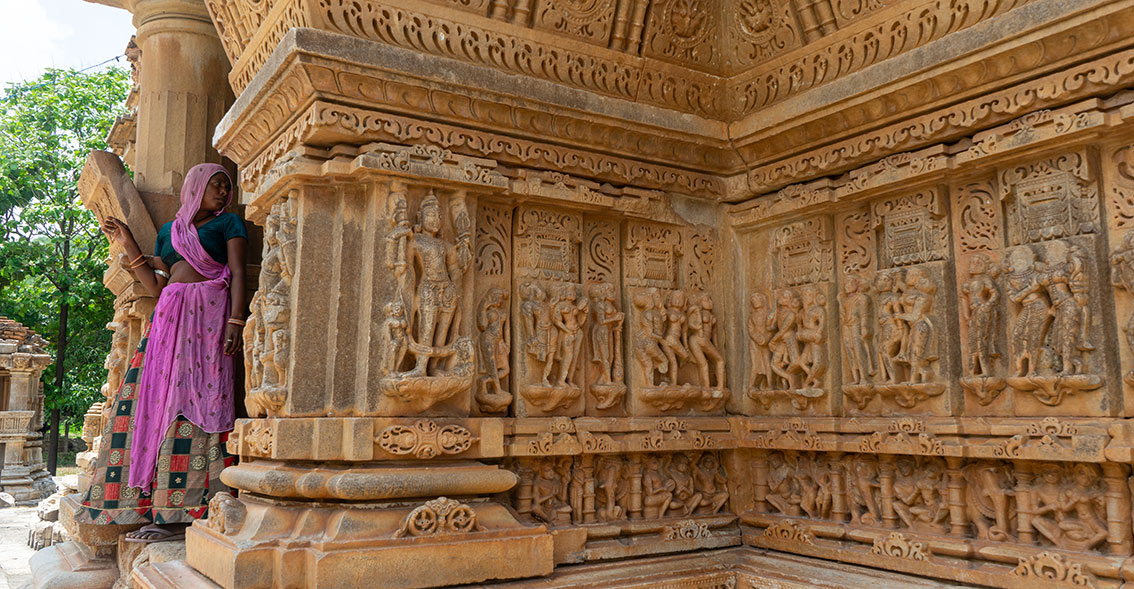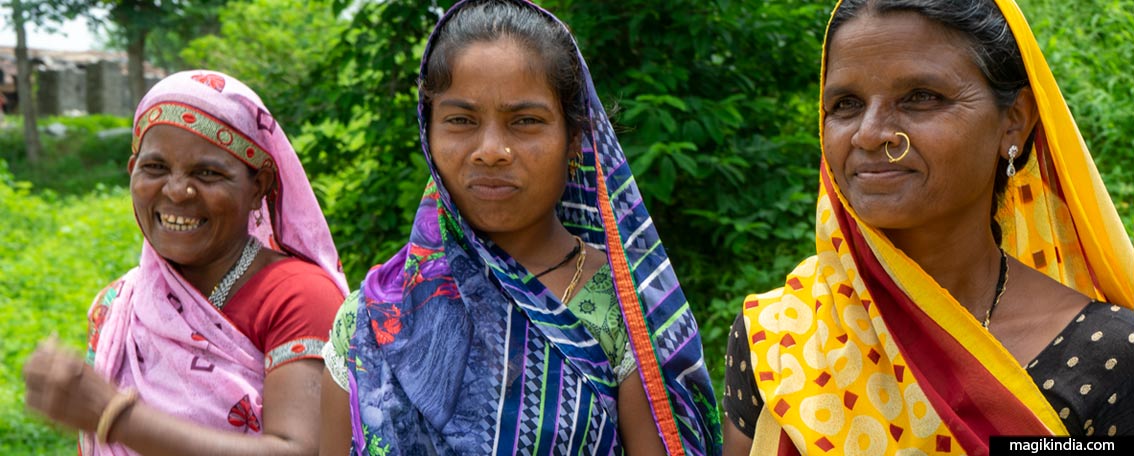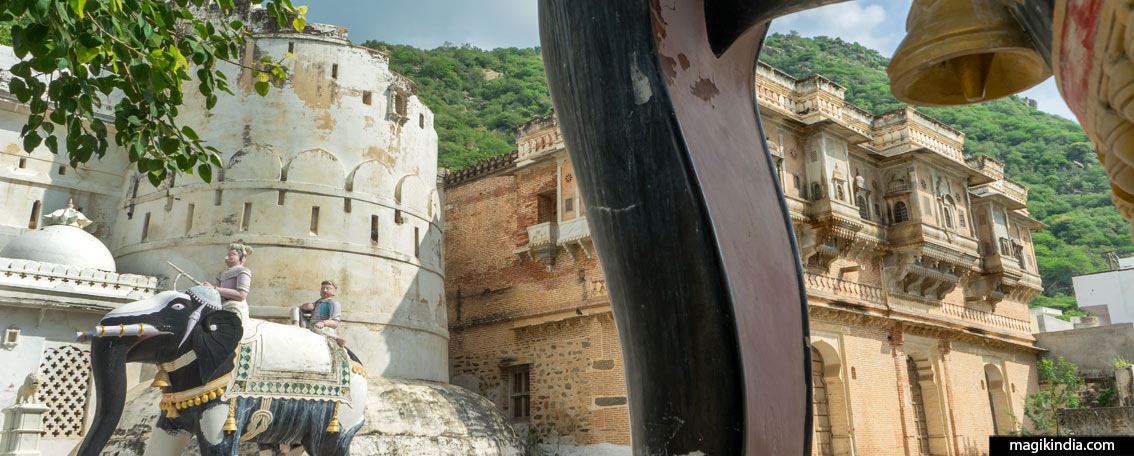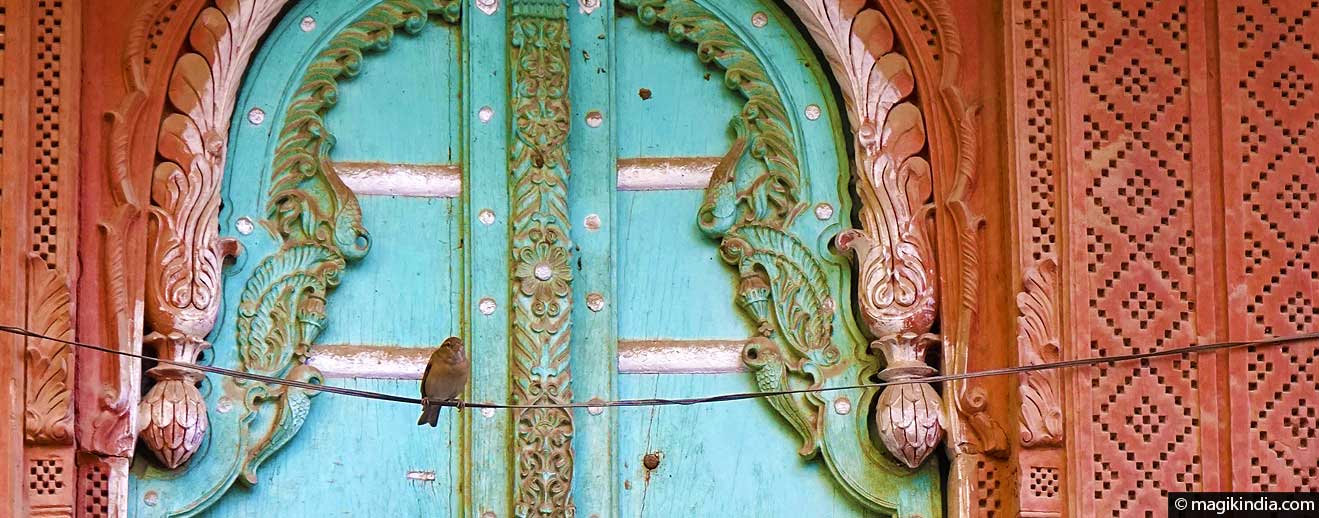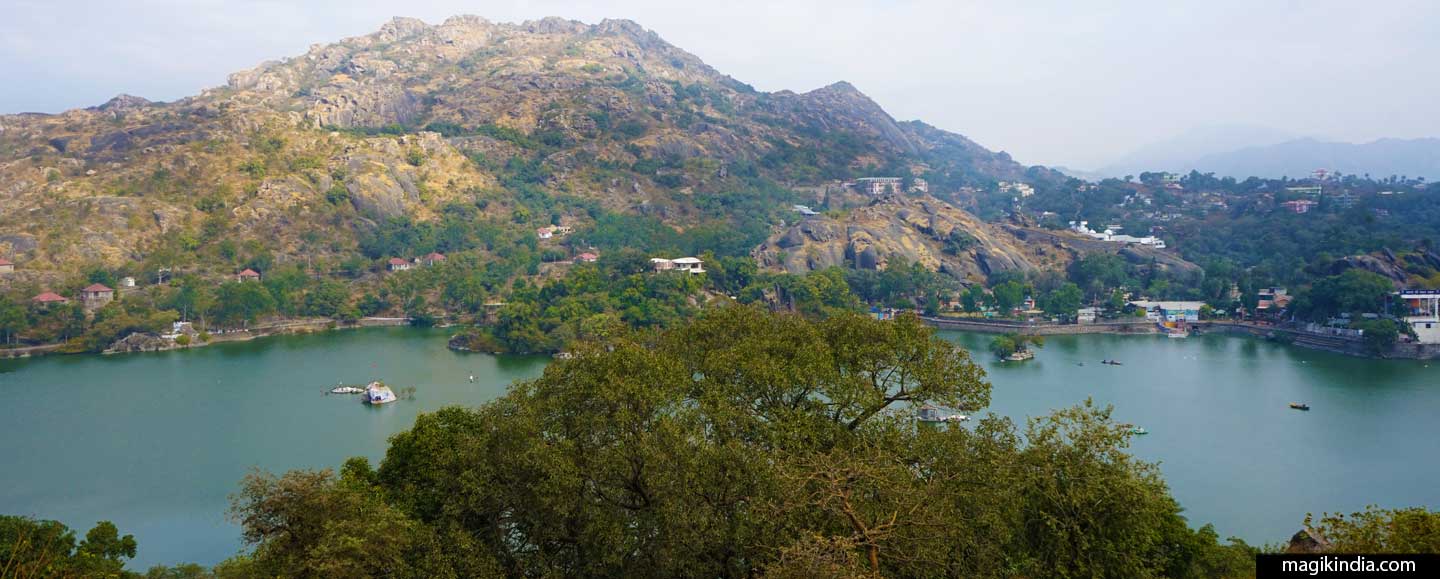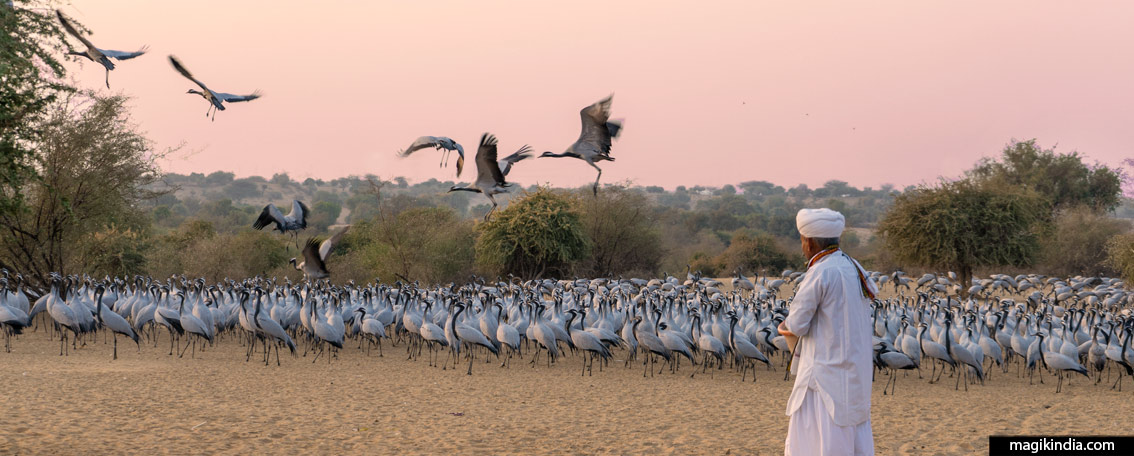
Bishnoi people, India’s first environmentalists
For the Bishnoi people, whose origins date back to the 15th century, ecology does not need to be taught, it is innate; it is a dharma (duty) that in the past has caused them to sacrifice their own lives to save trees. Due to this, they are referred to as “India’s first environmentalists”. In the 20th century, their activism inspired the “Chipko” movement, formed by a group of village women in Uttarakhand who opposed commercial logging by “hugging the trees”.
Origins of the Bishnois
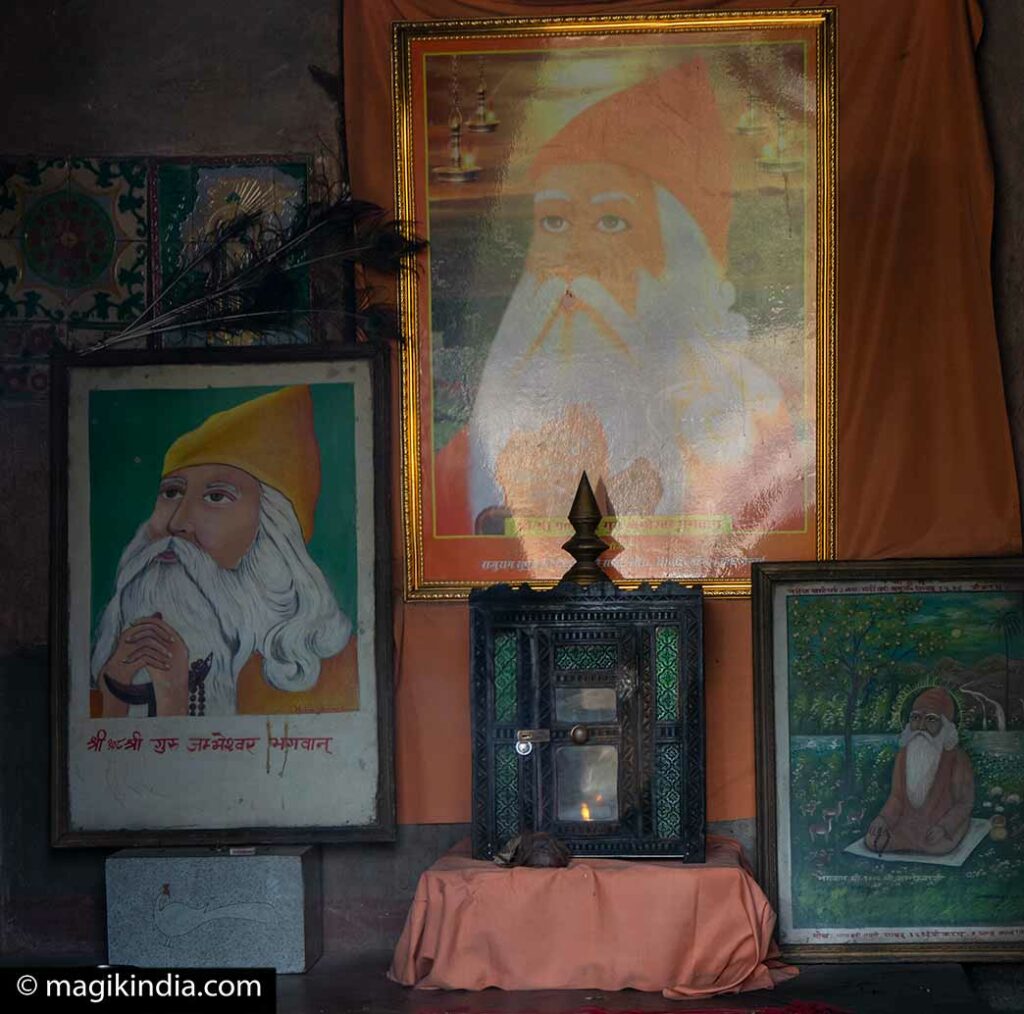
Bishnoism was founded by Jambhoji or Jambheshwar ji born of a Rajput family in 1451 in the village of Pipasar (district of Nagaur, Rajasthan). Until he was 7 years old, he didn’t utter a word, so his parents thought he was mute. It is said that he performs a miracle that restored his speech. During the next 27 years, he lived as a simple cowherd, just like Lord Krishna did. Some Bishnois actually consider Jambheshwar ji as a reincarnation of Lord Vishnu.
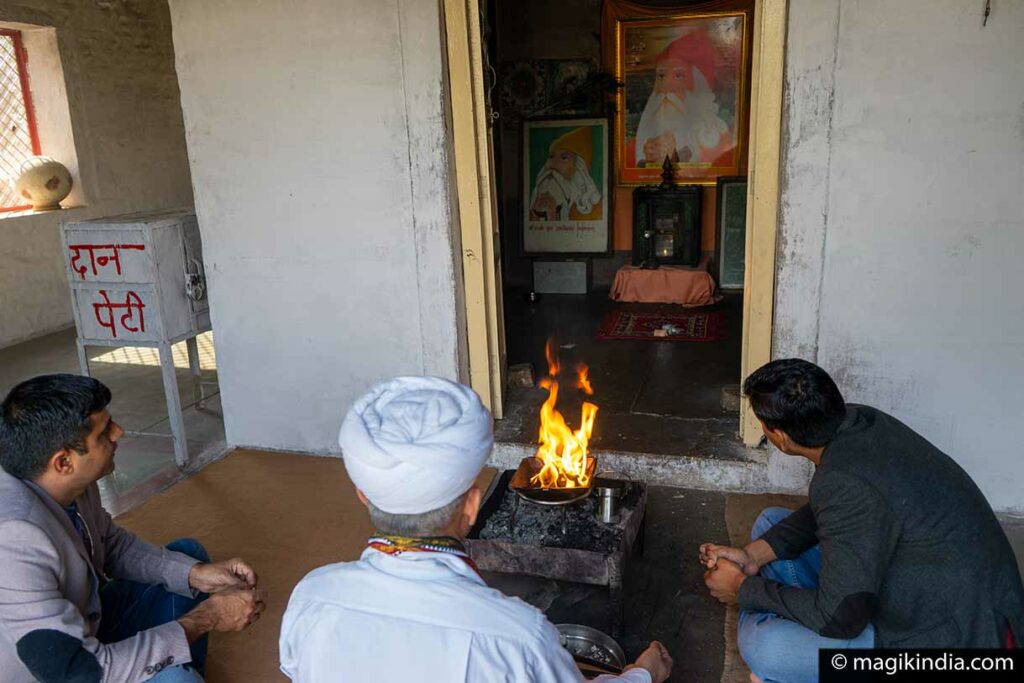
In 1485, a great drought seriously affected Rajasthan, bringing to light the notion of ecosystem and the interdependence of living beings.
It was then, at the age of 34, that Jambheshwar ji left his cowherd’s clothes for a saffron robe of a renunciant and enact 29 principles of wisdom that gave birth to Bishnoism: in Hindi “bis”, means “twenty”, and “noï”, nine.
He then travelled throughout India for 51 years to spread his knowledge. His teachings, written in poetic form, are contained in the book named Shabadwani comprising 120 Shabads (verses).

“He who honestly follows the 29 precepts of Jambheshwar ji can bear the name of Bishnoi”
This religion (or philosophy one might sometimes think) although based on certain principles of Hinduism, is open to everyone. There is a sentence that sums up this religious tolerance well: “He who honestly follows the 29 precepts of Jambhoji, can bear the name of Bishnoi”.
The 29 principles
There are four main thrusts in these principles: preservation of the environment, compassion for all living beings, personal hygiene and worship of God.
1 – Observe a setting aside of the mother and the newborn for thirty days after childbirth, keep the mother away from household activities.
This first principle enacts a form of maternity leave. The new mother is offered a period of rest after childbirth so that she can recover.
2 – Exempt the woman from household activities during the first five days of her menstruation.
This second principle is to respect a certain hygiene and limit the inconvenience of menstruation. This principle must be placed in the context of the time when there were not the same hygienic facilities. Currently, Bishnoi women in working life have told me that they do not follow this principle.
3 – Bathe every day in the morning before sunrise.
4 – Follow rules of ideal life: modesty, patience, satisfaction and cleanliness.
5 – Pray twice a day (morning and evening).
6 – Praise God, Vishan, in the evening with an Aarti (hymn).
7- Perform Yajna (Havan) with feelings of devotion and love.
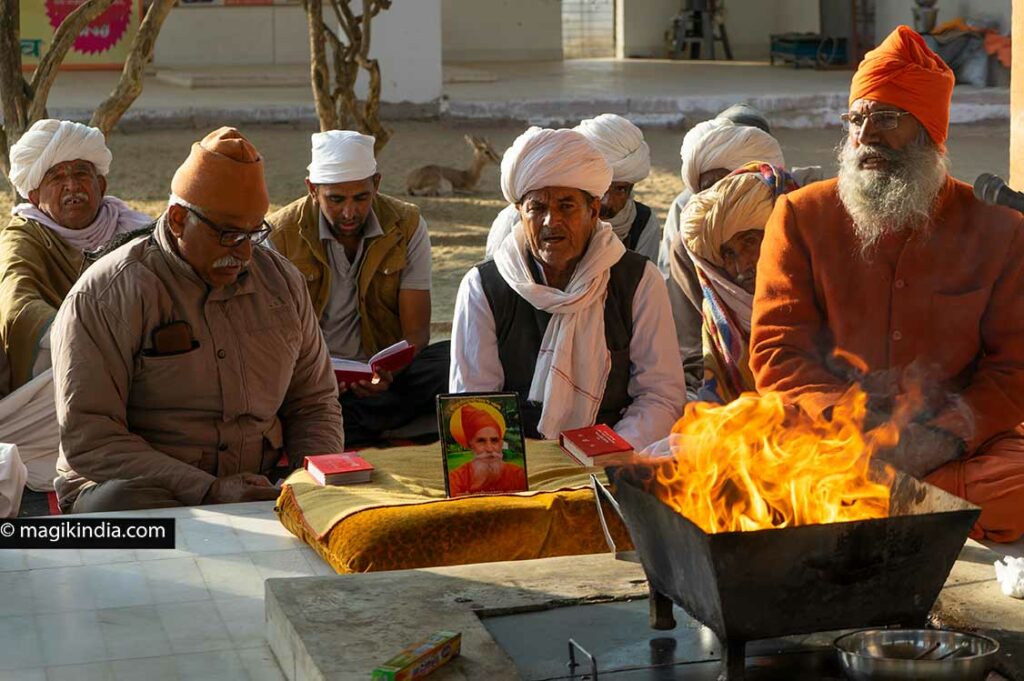
8 – Use filtered water, milk and firewood must be thoroughly cleaned (the wood must not contain living organisms).
9 – Speak pure and sincere words.
10 – Practice forgiveness and kindness of heart.
11 – Practice compassion.
12 – Do not steal and do not intend to do so.
13 – Do not disparage.
14 – Do not lie.
15 – Do not engage in arguments, heated debates or conflicts.
16 – Fasting during Amavasya (the new moon).
17 – Worship and recite the name of Lord Vishnu with adoration.
18 – Be compassionate towards all living beings, give them love.
19 – Do not cut green trees, protect the environment.
The Bishnois, unlike the Hindus, do not cremate their dead to save wood for cremation. They do not use coffins either, but put their dead directly in the ground wrapped in a simple shroud. They only collect dead wood. Even a carpenter patiently waits for the tree to fall.
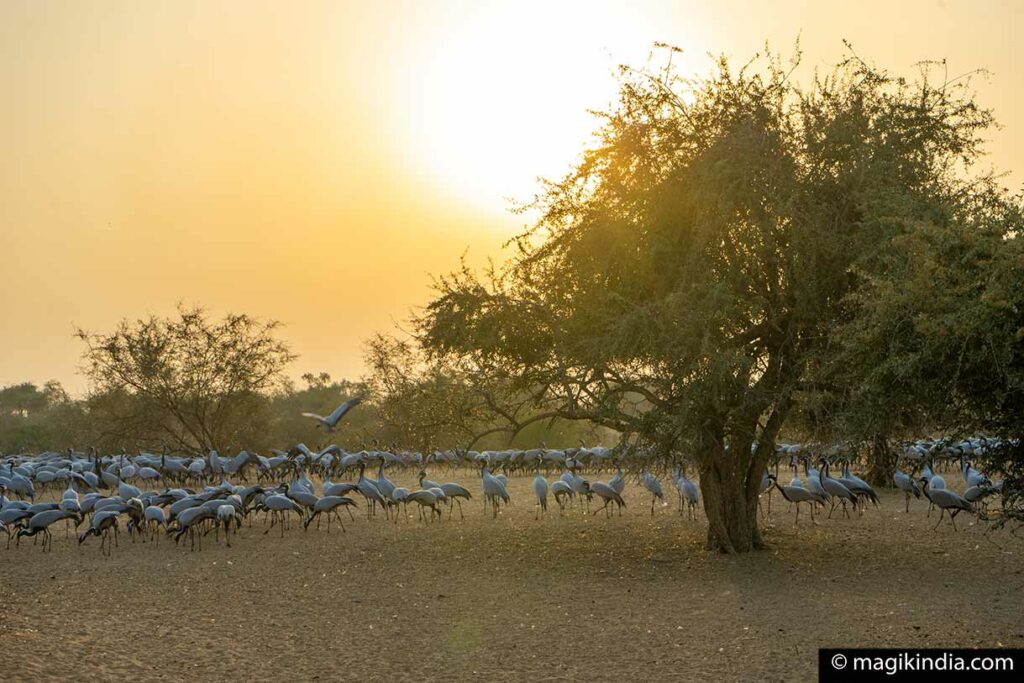
20 – Keep away from lust, anger, greed and attachment. Use force for good causes and fight for justice until the last breath.
21 – Cook yourself and not store food in unclean conditions.
22 – Provide shelter for abandoned animals to prevent them from being taken to the slaughterhouse.
The Bishnois are required to reserve a tenth of their grain harvest for feeding the local fauna, granaries are located next to some temples. Long before rainwater harvesting was in vogue, this community was already building reservoirs wherever needed to combat water scarcity.
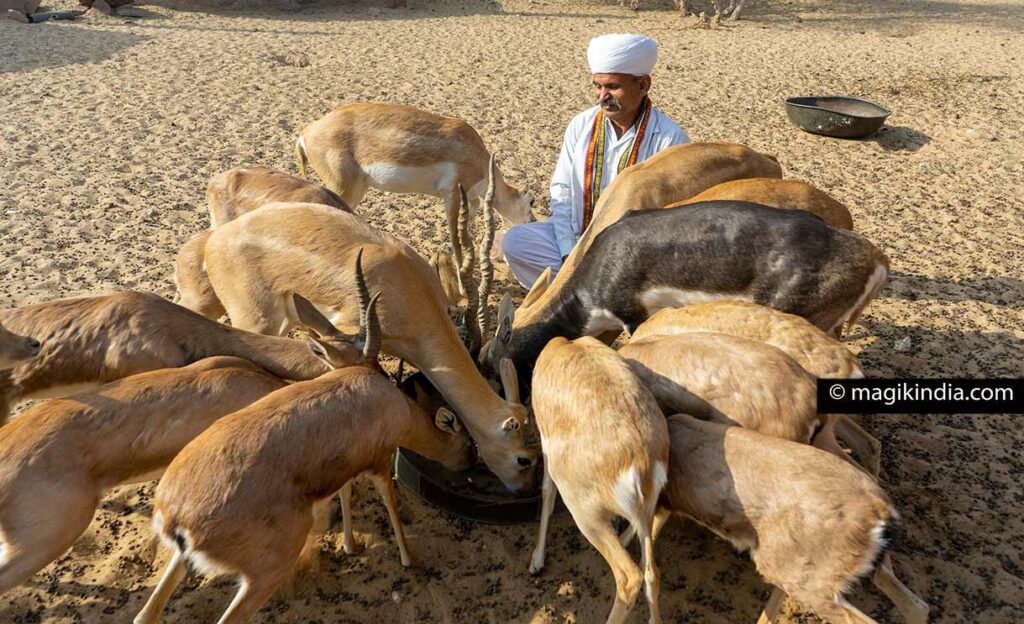
One of the fundamental principles of the Bishnois is “Amar Rakhave That” which means providing shelter to abandoned animals so that they can live out the rest of their lives in good conditions.
23 – Do not sterilize bulls.
24 – Do not consume or trade in opium.
25 – Do not consume tobacco and its derivatives.
26 – Do not consume or sell cannabis.
27 – Do not drink or sell alcohol.
28 – Do not eat meat.
29 – Do not use clothes dyed with blue color from plants.
At the time these principles were written, the color blue was extracted from the indigo plant. If indigo is planted continuously, it reduces the fertility of the soil and the land becomes barren.
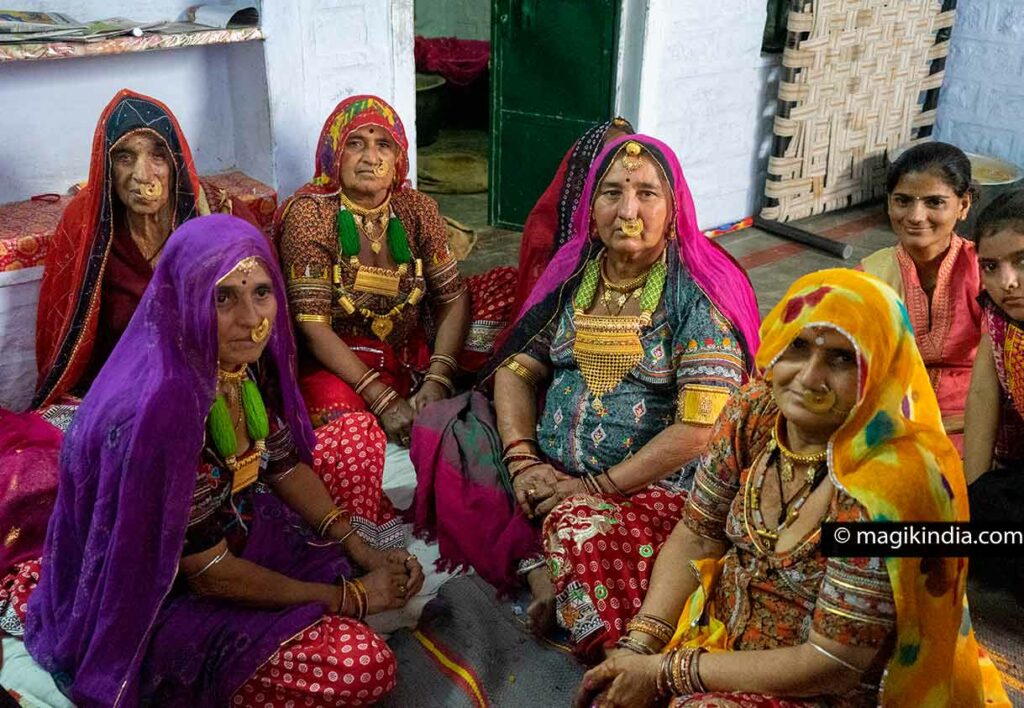
The Bishnois are mainly present in the state of Rajasthan, in the regions of Jodhpur and Bikaner and, to a lesser extent, in the neighboring state of Haryana. This community, which has less than a million members, once lived in isolated villages, but in recent decades, with the development of education, they have abandoned agriculture and they are more and more numerous to be settled in town.
The Bishnois in their thatched-roof huts is nothing more than an Epinal print: yes, there are still a few traditional villages, but very few. Like other communities in India, a large majority of Bishnois have opted for modern houses and, as far as I could see, lead a rather comfortable life.
Traditional outfits
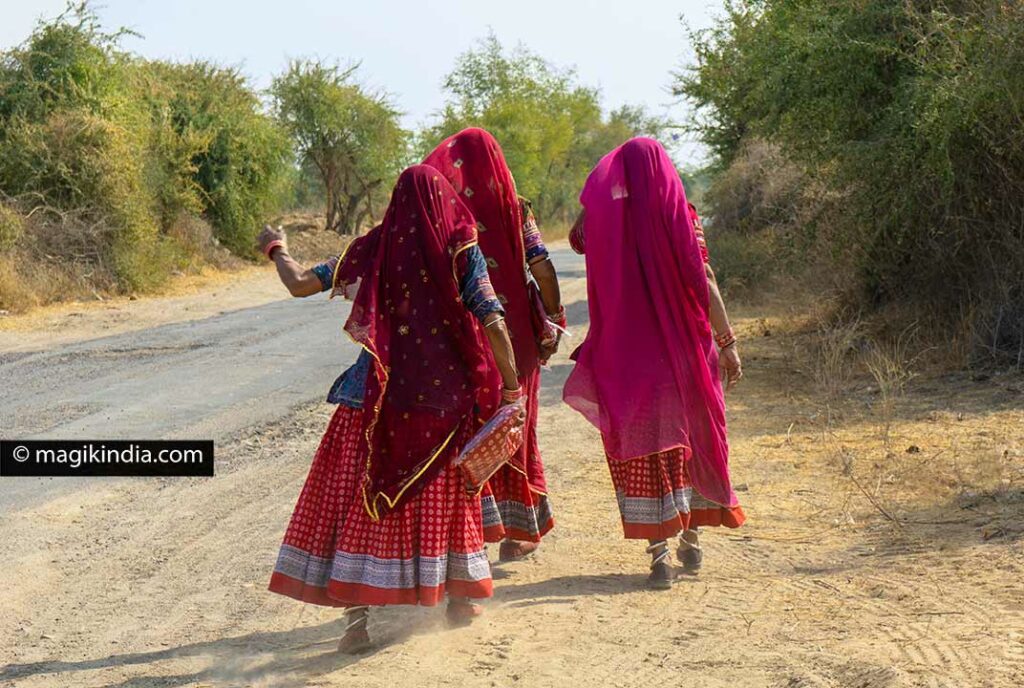
The colors of clothing as enacted by Jambheshwar ji, are bright red or orange for women who are “sources of life”, and they are white for men as a “symbol of devotion”. The blue, as we saw above, is prohibited, however modern society and the influence of fashion often prevail over this principle.
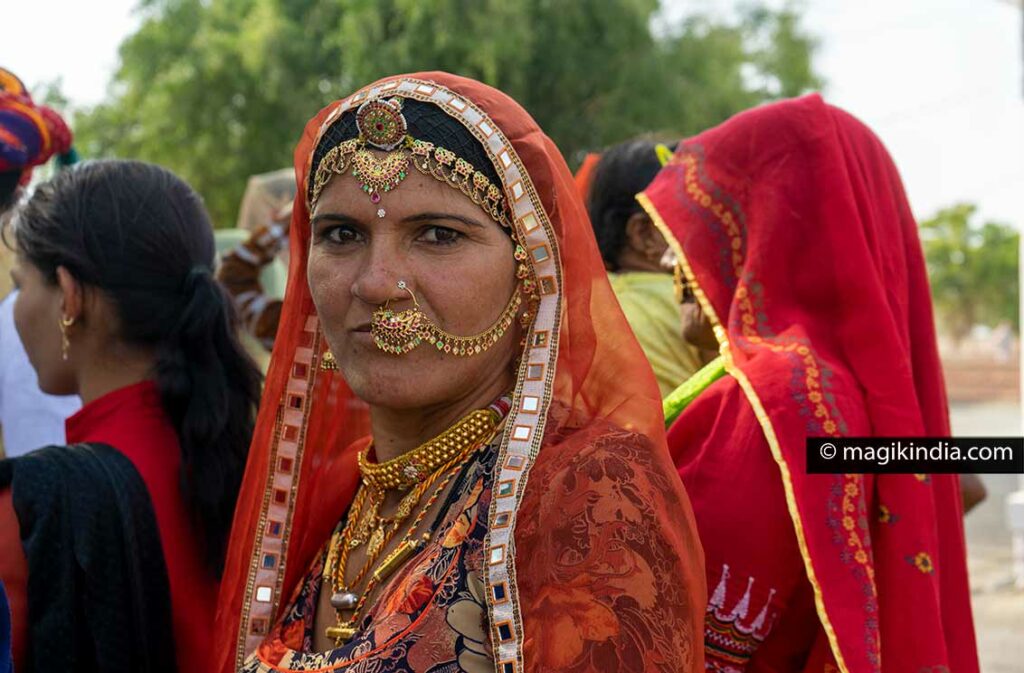
Bishnoi women generally wear the “poshak”, the traditional Rajput outfit consisting of four parts: the kanchali (a bodice), the kurti (a short tunic worn over the Kanchali), the ghagra (a long skirt) and the odhani (long transparent veil of 2.5 m worn on the head).
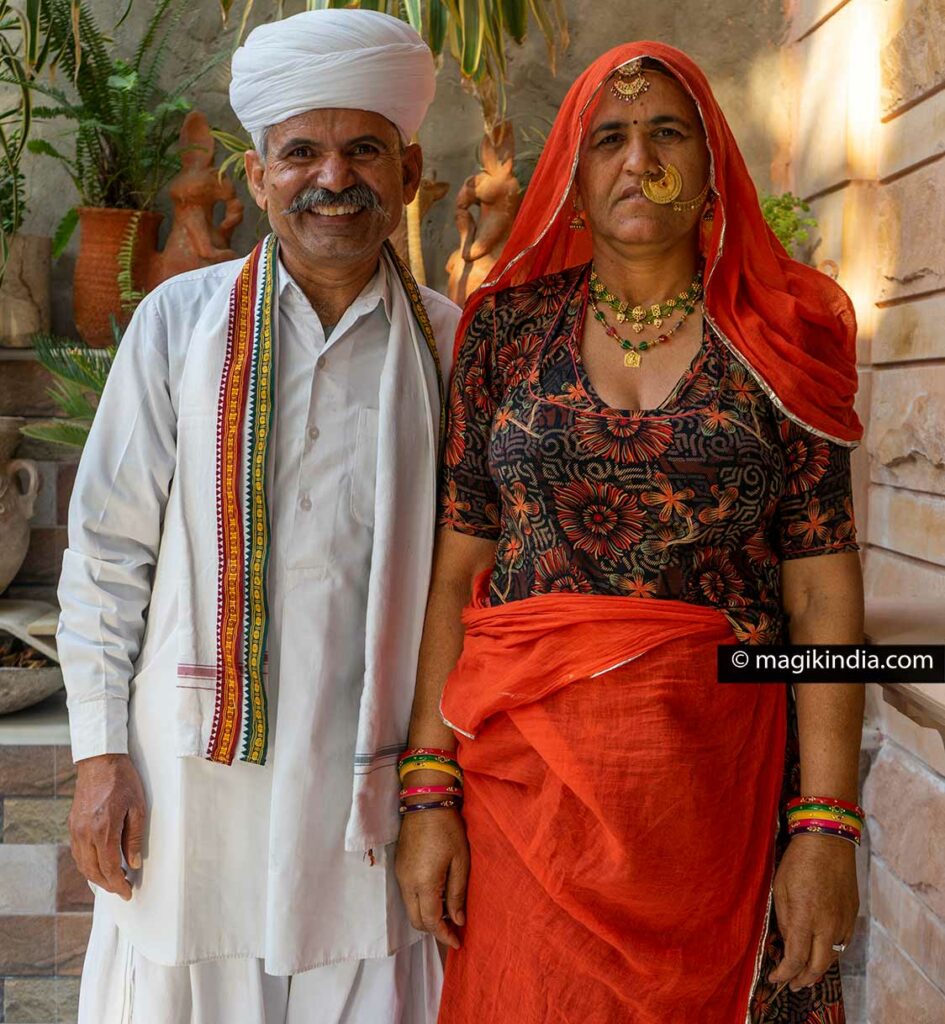
The women’s jewelry is also of the Rajput signature with, among other things, a choker necklace, a “timaniya”, a large gold pendant attached to a pearl necklace and a “nath”, a chain nose ring which has a design very specific to the Bishnois, in the shape of a half-sun or a half-moon, of which I could not find the meaning (if there is one).
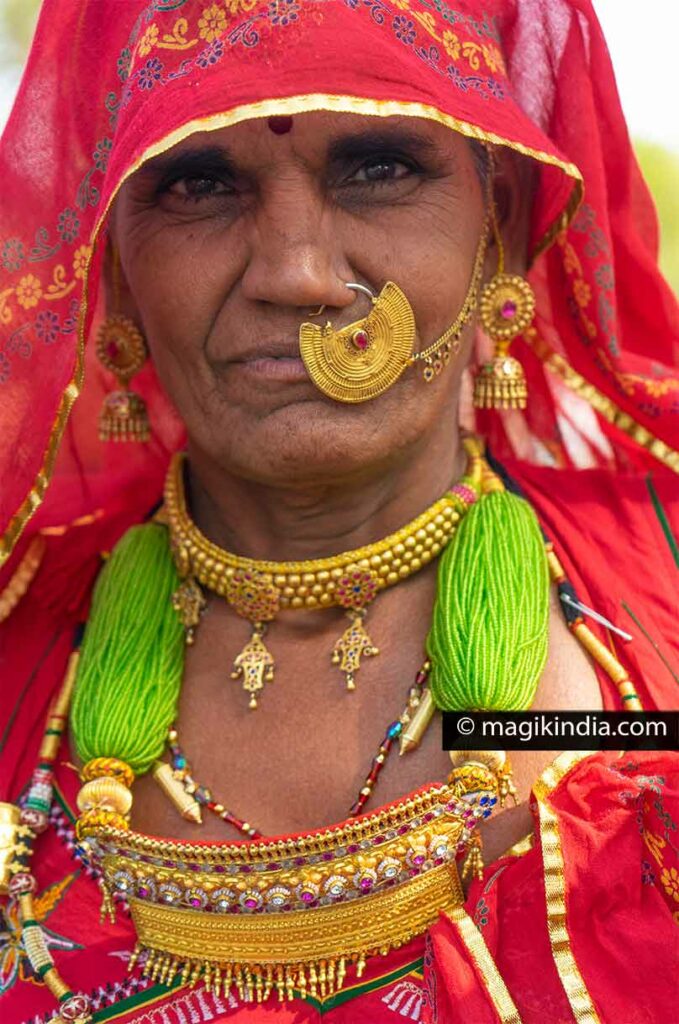
About Bishnoi women nursing fawns
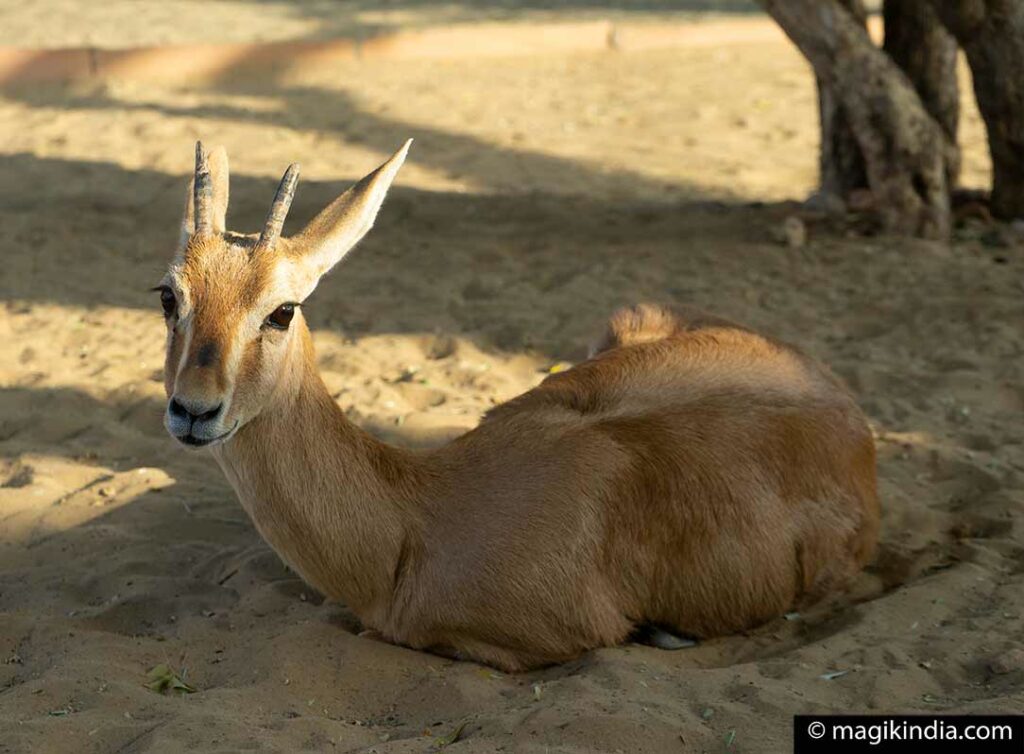
The Indian gazelle, or chinkara (Gazella bennettii), is particularly venerated by the Bishnois. Bishnoi women have a long tradition of nursing orphaned fawns as their own children. They may still do this today, but don’t expect to find this in every home. This remains a rare occurrence.
Bishnoi activism
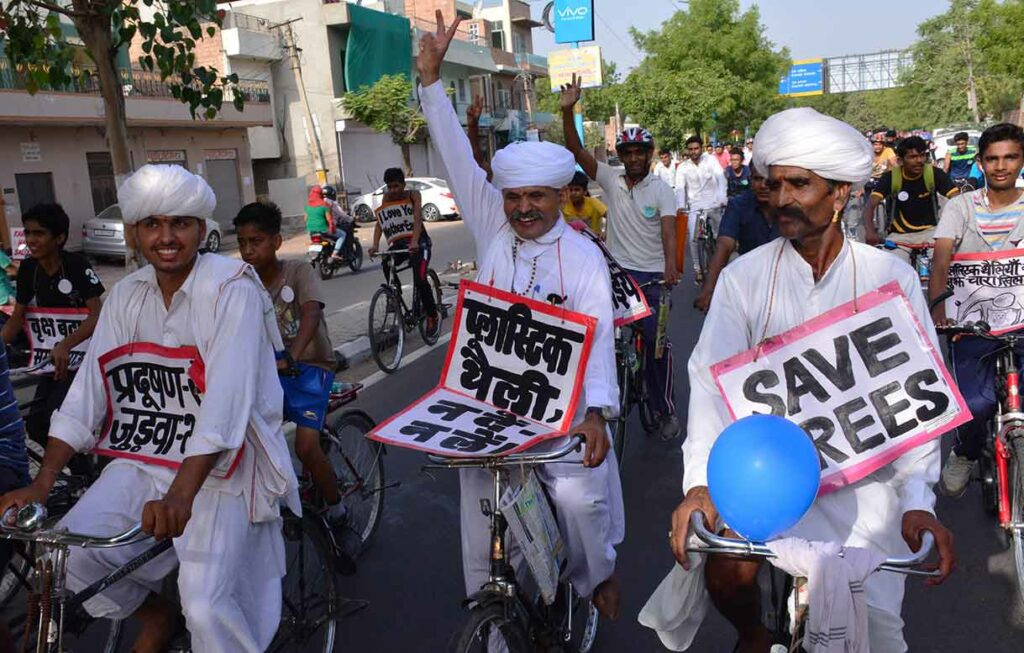
“If a tree can be saved, even by sacrificing its own life, it is worth it.” Shabadwani c.69
All is said.
This desire to save the environment at the cost of his life was sadly illustrated during the massacre of 1730, a landmark of Bishnois activism.
At that time, Maharana Abhai Singh of Jodhpur desiring to build a new palace, ordered the felling of a hundred trees in the Khejarli region of Rajasthan. This region is that of the Bishnois and their sacred trees, the Khejris.
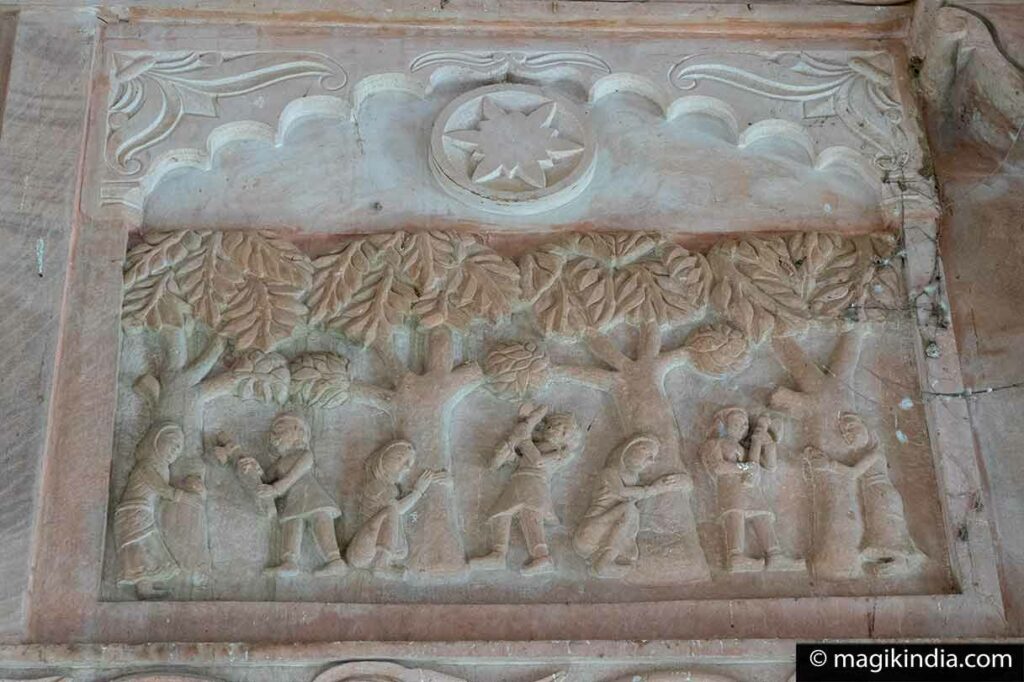
When the king’s troops arrived and seeing that the Maharana would not give up on his plans, a woman from the community, Amrita Devi Bishnoi, followed by her daughters and several other women from the village each hugged a tree. Other villagers also joined this peaceful opposition. The king’s soldiers, not being intimidated, brought down the trees and their opponents with axes. 363 members of the Bishnoi community died there. The king, in front of the scale of the massacre, will be seized with remorse and will ask that, henceforth, the precepts of the Bishnois be respected.
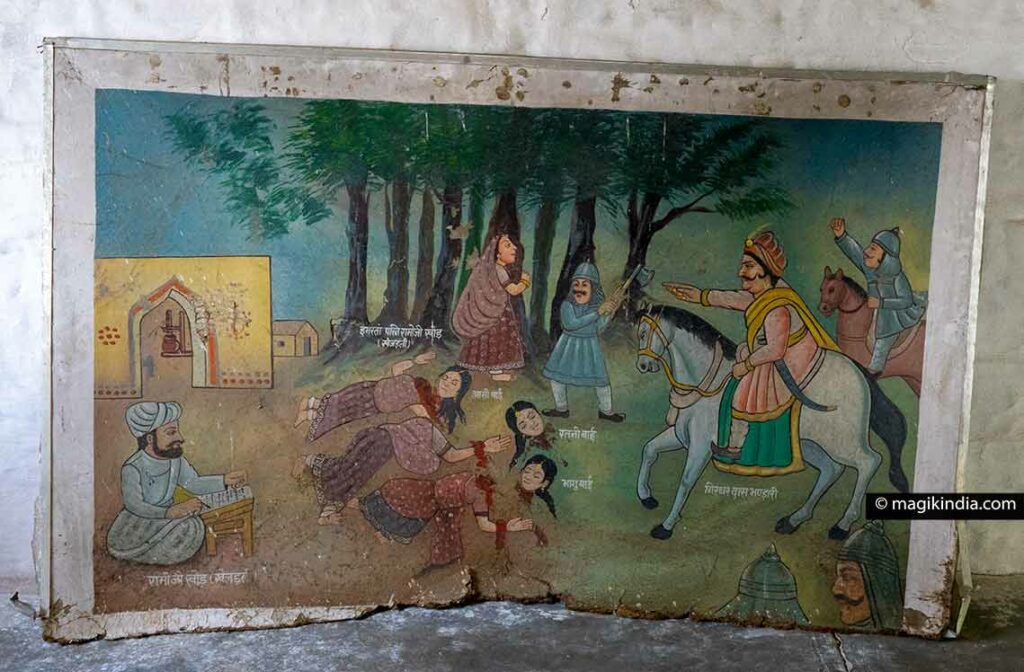
Chipko Andolan
Inspired by this painful event, Sunder Lal Bahuguna, an environmentalist from Uttarakhand, created in 1970 the Chipko movement (literally “to stick to”), composed mainly of women. By “sticking to the trees”, simple village women, often illiterate, will win multiple battles against groups of powerful loggers determined to decimate entire areas of forest.
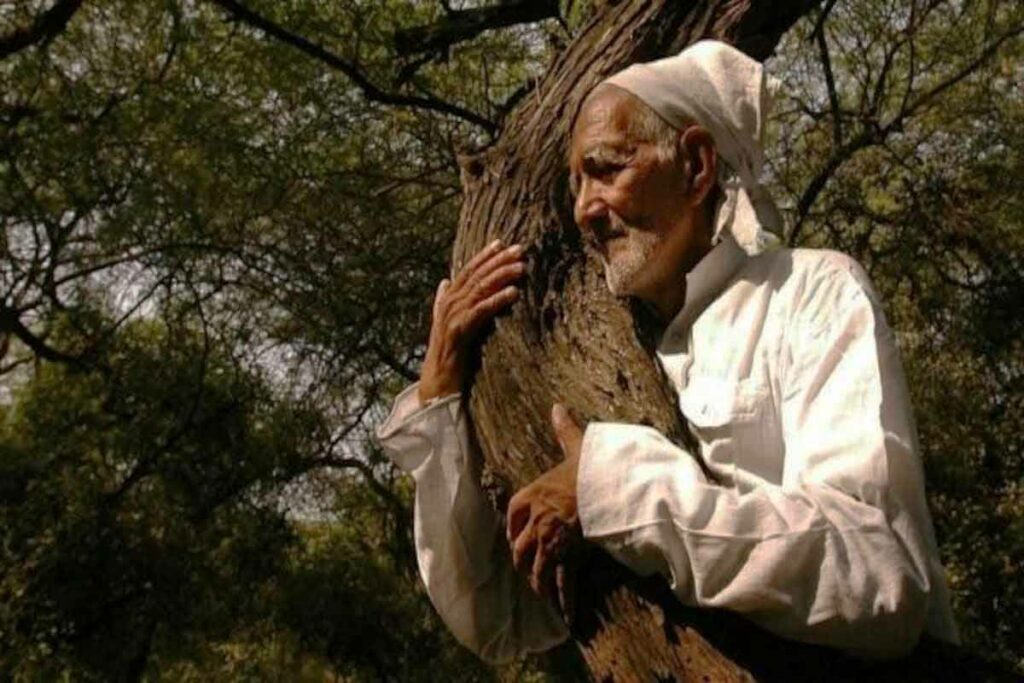
The Chipko will give rise to resistances of the same kind throughout India, notably the Appiko Chaluvali (1983) in Karnataka against the deforestation of the Sahyadri chain of the western ghats and the Jungle Bachao Andolan (1982) in the current Jharkhand and Bihar against the replacement of native “sal” trees by teak trees intended for sale.
This non-violent movement will spread well beyond the borders of India, throughout Asia but also in the West. The “tree-hunger” movement has its roots in the environmental struggle of the Bishnois.
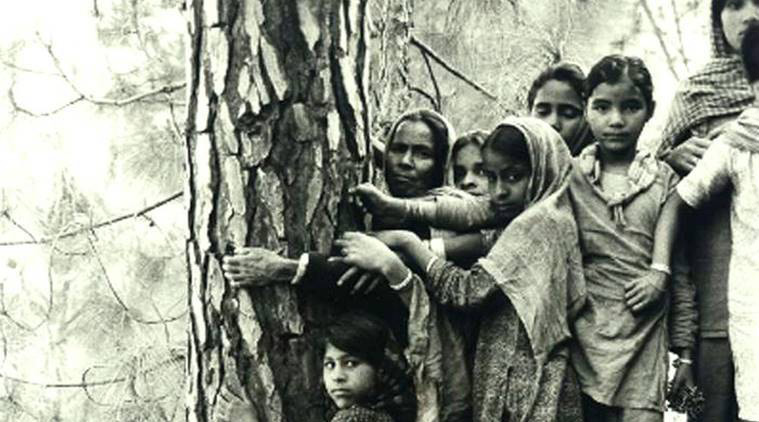
“If you’re a poacher, the worst thing that can happen to you is to be caught by a Bishnoi.” Bishnoi saying
The Bishnois, as true vigilantes of the environment, do not hesitate to walk the corridors of the courts to claim their rights and spare no one: in 1998, they will attack the Bollywood megastar Salman Khan accused of having shot several cervicapra antelopes during an illegal hunt. This caused a stir all over India.
In 2018, the actor was sentenced to 5 years in prison and, even if this sentence was never carried out, this event gives a warning to poachers: the Bishnois will make no exception and will not let go of anything to defend the environment.
In 1999, following this legal action, the Bishnoi community understood the need to organize themselves to continue their environmental struggle effectively. The NGO “Bishnoi Tiger Force (BTF)” was thus created; it has an awareness, education and protection function and also works hand in hand with the forest service, informing them in particular of illegal hunting.
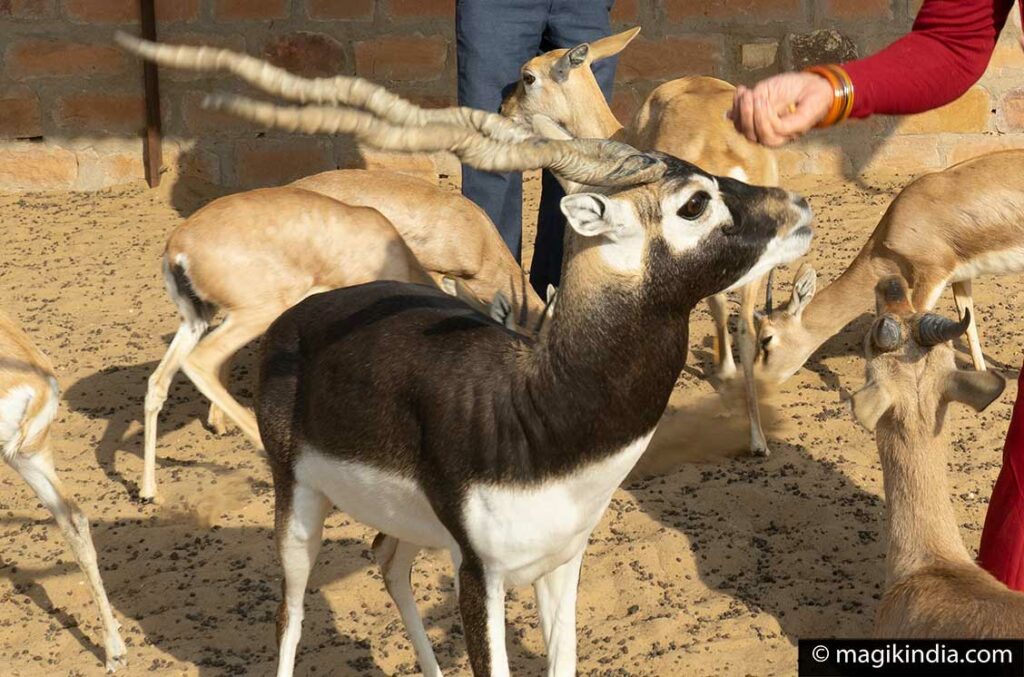
Without the Bishnois, it is highly probable that the Antelope cervicapra (black fallow deer) and the Chinkara, the Indian gazelle (Gazella bennettii), which come under section 9 of the “Wildlife Protection Act of 1972” (high protection) would have disappeared.
Motivated by the sacrifice of the Bishnois of 1730, the Indian government will establish in 2001, the prize “Amrita Devi Bishnoi Smrithi Paryavaran” awarded to individuals or communities who have done exemplary and significant work for the protection of the country’s wildlife.
The Khejri, “the marvellous tree”
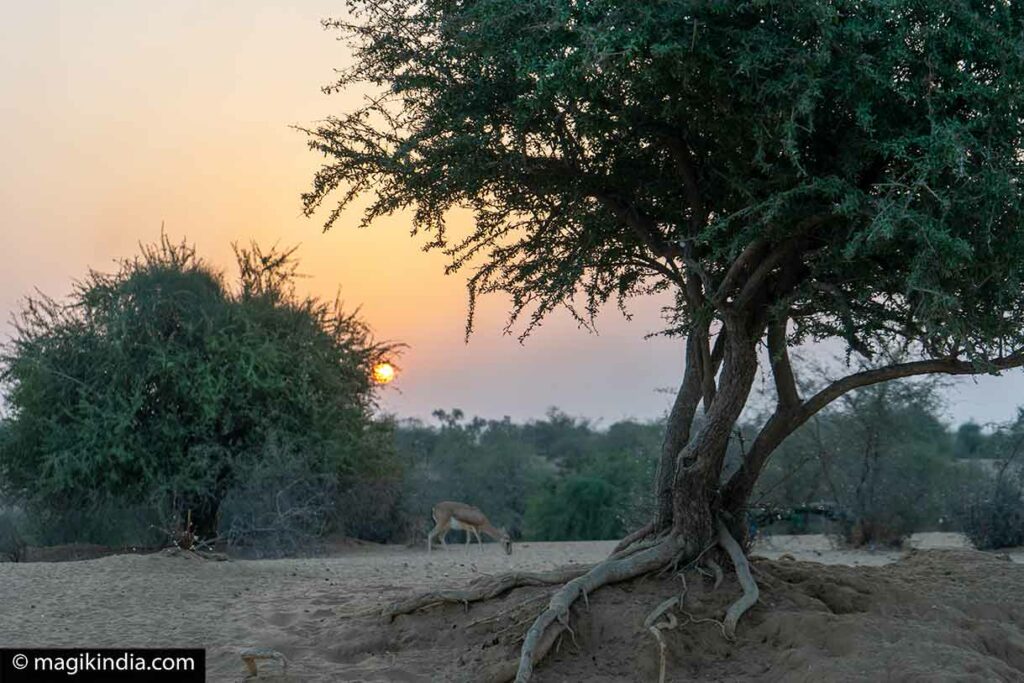
Venerated as “shami” during the Vedic period, the Khejri (Prosopis cineraria), the emblem tree of Rajasthan, is also the holiest tree of the Bishnois. This evergreen plant was not chosen at random: it plays a vital role in preserving the ecosystem of arid and semi-arid regions. It is an essential tree for the peoples of the Thar Desert.
The Khejri can withstand extreme climatic conditions where few plants can survive. It provides shade and nutritious fodder for herbivores and its root system makes the soil fertile by fixing atmospheric nitrogen.
In Ayurvedic medicine, it is used, among other things, as a treatment for ulcers, arthritis and scorpion bites.
Due to its multiple properties, the Khejri is also called the “king of the desert” or the “marvellous tree”.
Bishnoi festivals
The Bishnois generally follow the calendar of Hindu festivals, along with days of fasting and three “melas” (fairs) specific to their community.
Amavasya
The new moon (Amavasya in the Hindu calendar) is considered a holy day by the Bishnois. They are supposed to fast on this day (it is one of the 29 precepts of Jambhoji).
That of the month of Falgun (usually in February or March) is considered the most sacred, it is during this Amavasya that one of two Jambheshwar melas is organized.
Jambheshwar Melas
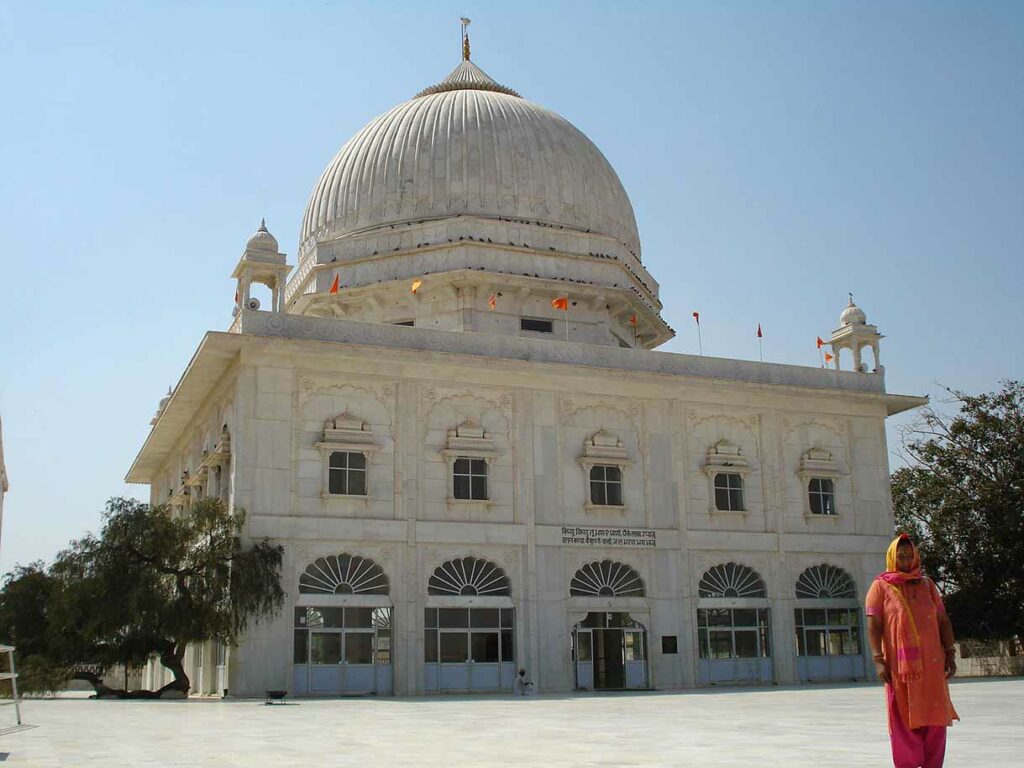
The “Jambheshwar or Mukam mela” is organized in memory of Sri Jambheshwar Ji, the founder of Bishnoism. This is where he meditated for 7 years and died in 1536.
It is held twice a year in the village of Mukam, near Nokha, 80 km from Bikaner. The largest fair takes place in February or March (Falgun Amavasya) and brings together up to 500,000 devotees from many states, the smallest is held in October (Ashwin Amavasya).
During these melas, the faithful generally visit the village of Pipasar (the birthplace of the saint) and come to meditate in the temple of Mukam, built on the Mahasamadhi (tomb) of Sri Jambheshwar Ji as well as in the one located on the dune of sand of Samrathal Dora where the saint gave his initiation, a few kilometers from the first temple.
Around the two temples large “havan” or sacred fires are erected, around which the faithful procession and throw offerings in the form of coconuts and ghi (clarified butter).
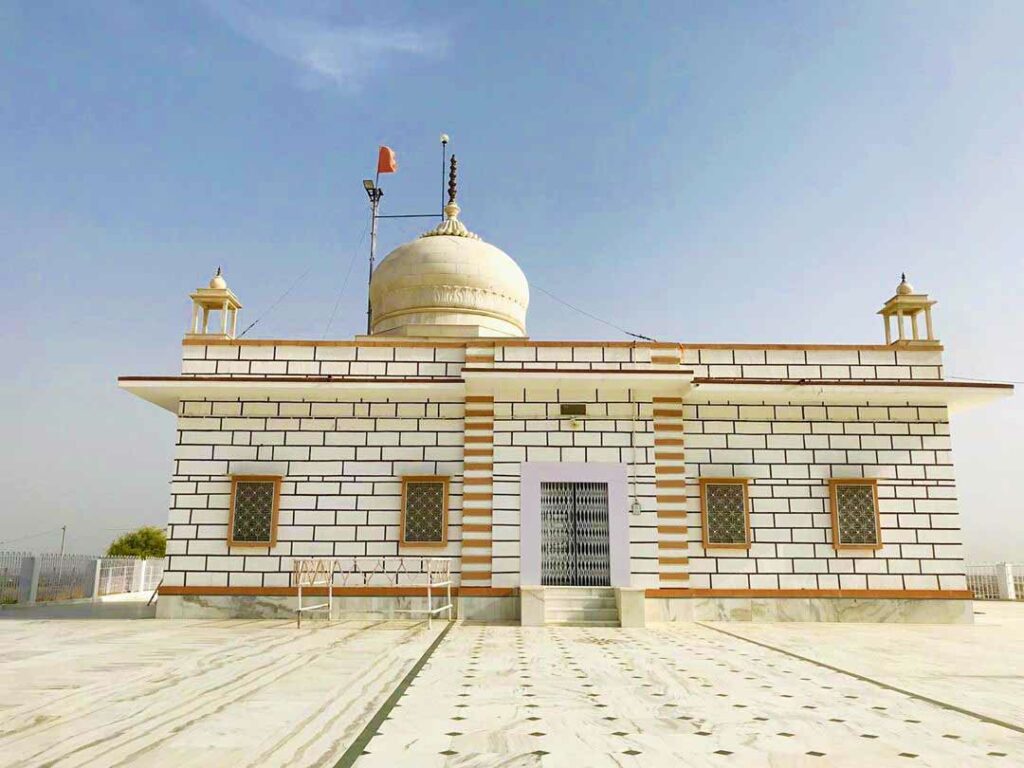
“Build dunes to break the wind and save biodiversity”
During the Jambheshwar fair, another tradition is to take sand from the foot of the Samrathal Dora dune and place it on its top to build several more sand dunes near the temple. Thus, the faithful follow one of the teachings of Jambhoji stating that one must “build dunes to break the wind and save biodiversity”
The fair is also an opportunity for rural people to sell and buy items for their daily use.
Khejarli mela
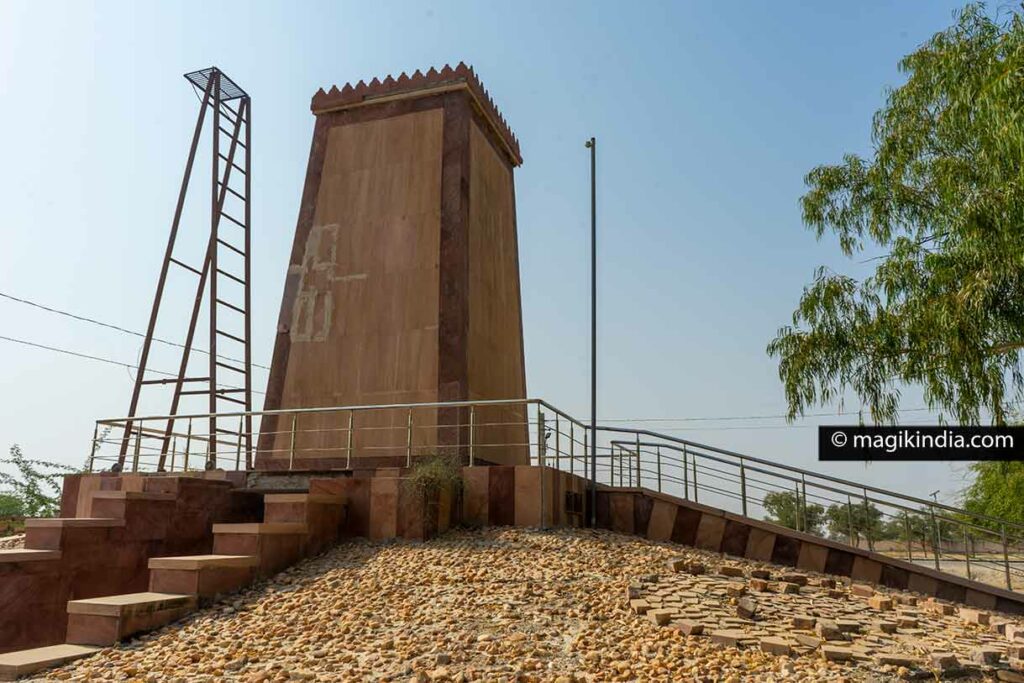
30 kilometers southeast of the city of Jodhpur, lies the village named Khejarli, derived from the Khejri trees that were once abundant in the region.
There, during the month of Bhadra (August or September in our Gregorian calendar), the fair of the same name is held in memory of Amrita Devi Bishnoi and the 362 martyrs who sacrificed their lives in 1730.
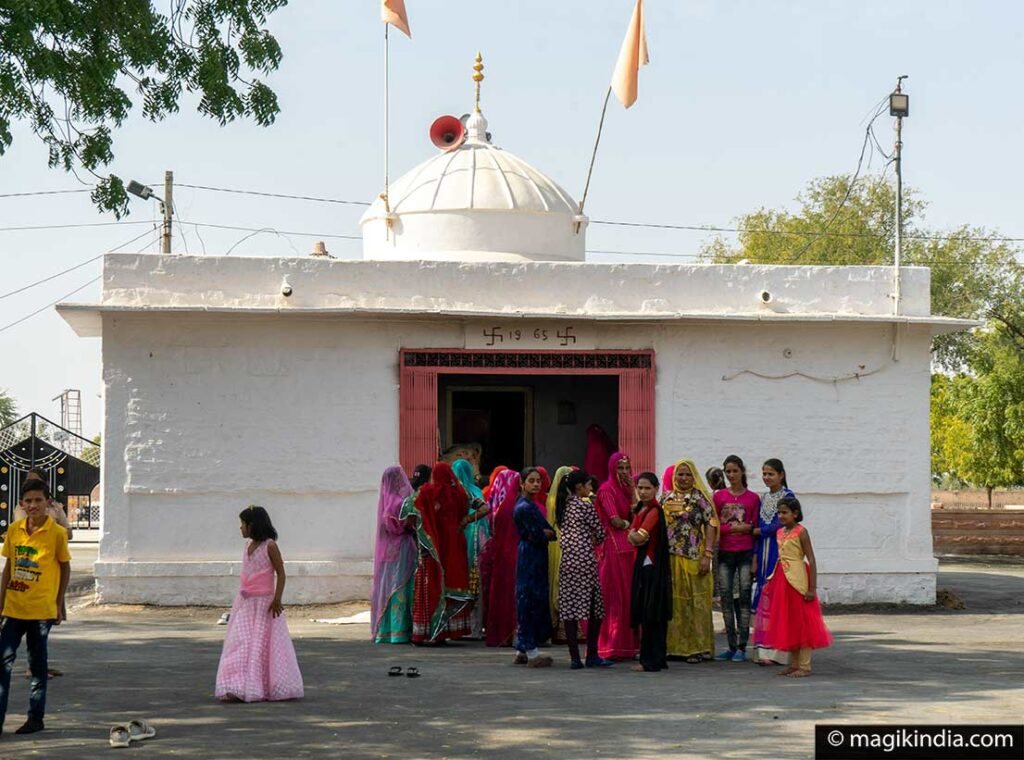
A stone memorial rising to the sky marks the site of the massacre, it is placed near a small temple where the faithful come to meditate.
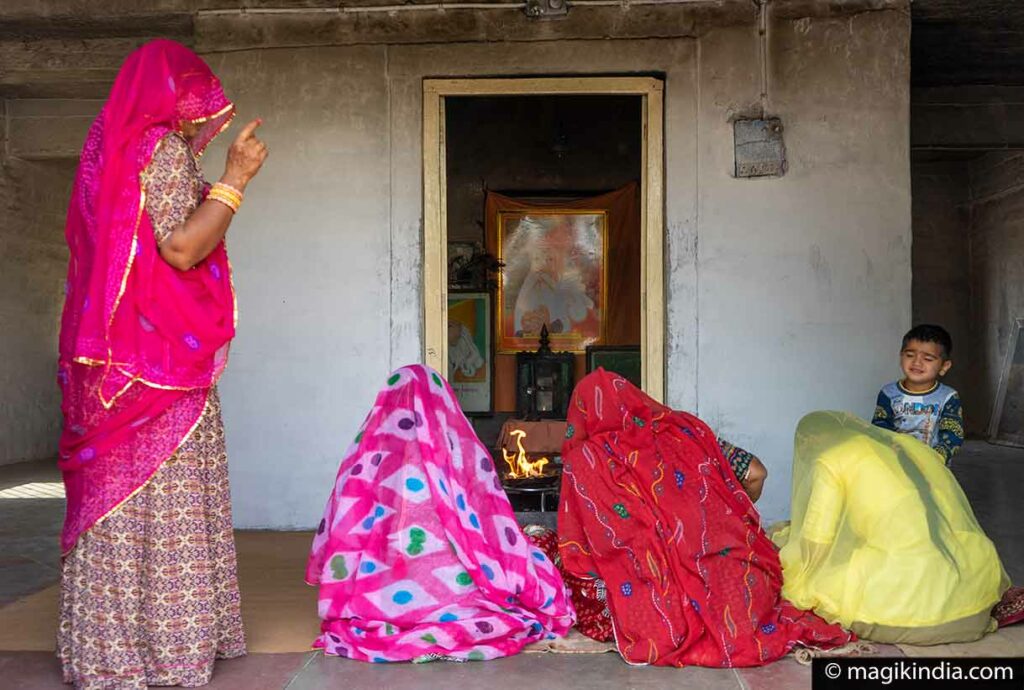
A little further on, a new temple has recently been completed. It is an elegant red sandstone building topped with three domes, with three Jain-style arches at the entrance. The interior is sober with sculpted panels depicting scenes from the 1730 massacre and a fresco in pastel and gold tones on the main dome.
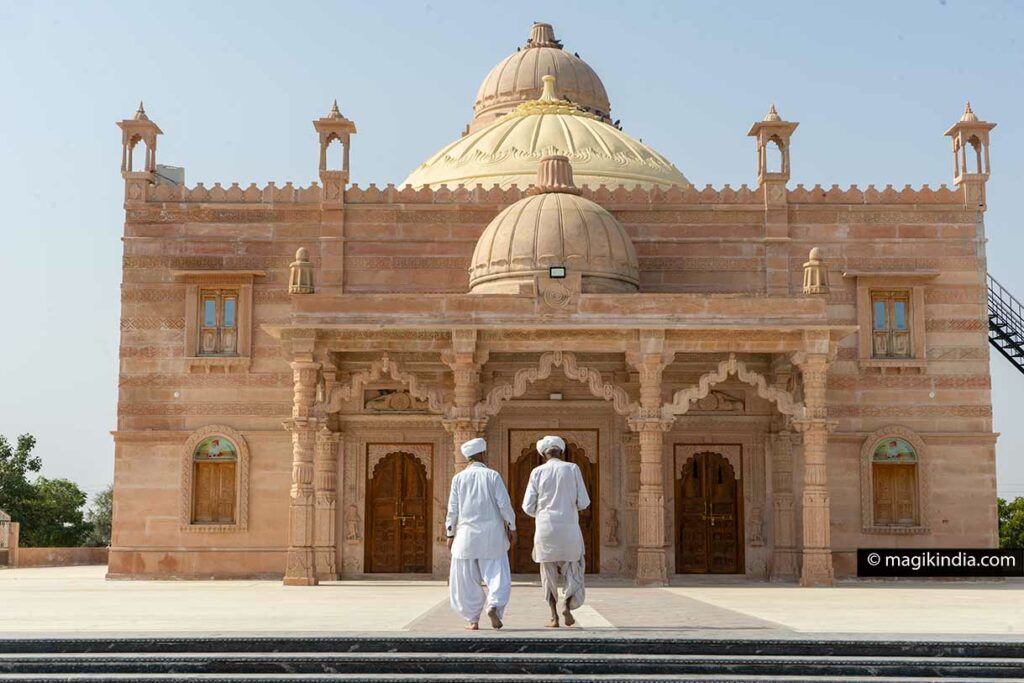
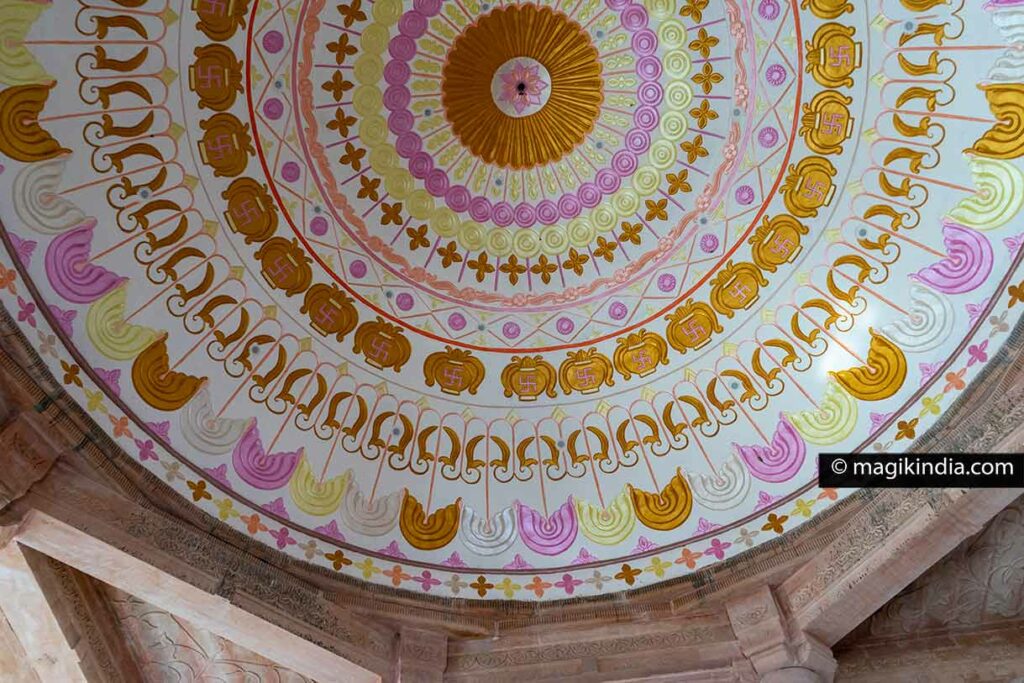
During the Khejarli fair, there are the same fire rituals as that of Jambheshwar and some merchant stands.
On this occasion, each family has a tradition of buying a small tree to plant around their house. It’s a way of honoring the victims of 1730.
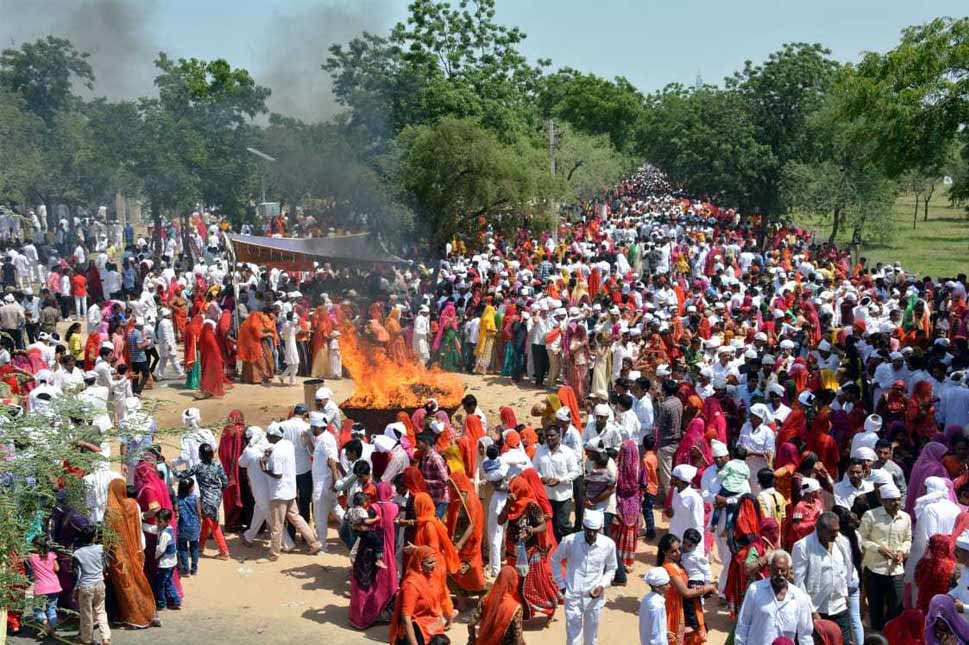
Many thanks to Khamu Ram Bishnoi for taking me to the key places of Bishnoism and to Lokesh Bishnoi for patiently answering my questions.

